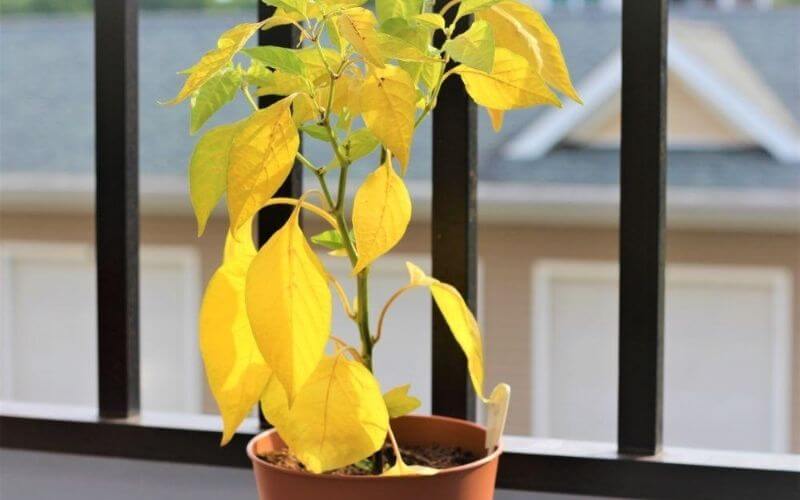
Pepper plants are a favorite vegetable plant added to garden beds; everyone loves fresh peppers on their dinner plates. The plants survive a range of conditions, and you can select peppers that come in multiple colors, sizes, and even shapes.
Despite being easy to grow, even experienced gardeners can find yellow leaves on pepper plants. It’s not an uncommon problem that takes place in vegetable gardens, and when you see your lovely pepper plants turning yellow, it can be frustrating and upsetting.
Most gardeners encounter peppers with yellow leaves, especially if you start your pepper plants from seed. The typical cause of yellow leaves on pepper plants is most often caused by overwatering.
However, even if you water correctly, your plants can still have yellow leaves.
So, why do I have yellow leaves on pepper plants?
Lack of moisture and micronutrients deficiency are the are the two most common reasons for yellow leaves on a pepper plant. Under watering weakens the plant, making it more vulnerable to disease. The lack of water also leads to the fact that nutrients from the soil are absorbed worse.
Yellowing leaves are a sign that something is wrong with your plant. It could be a sign that you’re overwatering your pepper plants, lacking nutrients, or something else might be wrong. Take a look at all of the reasons for yellow leaves on pepper plants and how to fix them.
The 6 Reasons for Yellow Leaves on Pepper Plants
When the leaves of paper plants turn yellow, you do not need to panic, you should calmly sort out the situation, find the cause of this phenomenon and save the plant in time before it is too late.
If the rules for growing peppers are violated, the leaves are the first to react to adverse conditions. When the leaves of paper plants turn yellow, you do not need to panic, you should calmly sort out the situation, find the cause of this phenomenon and save the plant in time before it is too late.
Here the common causes of yellowing on a pepper plant:
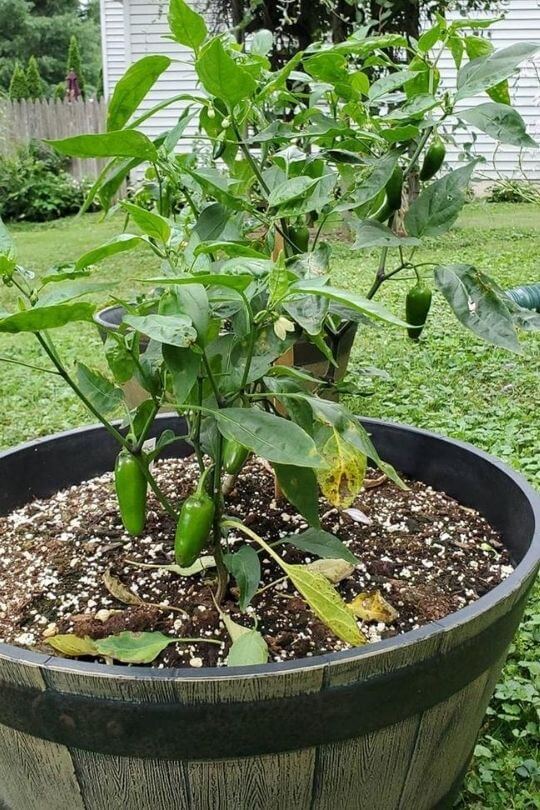
1. Yellow Leaves on a Pepper Plant Caused by Water Stress
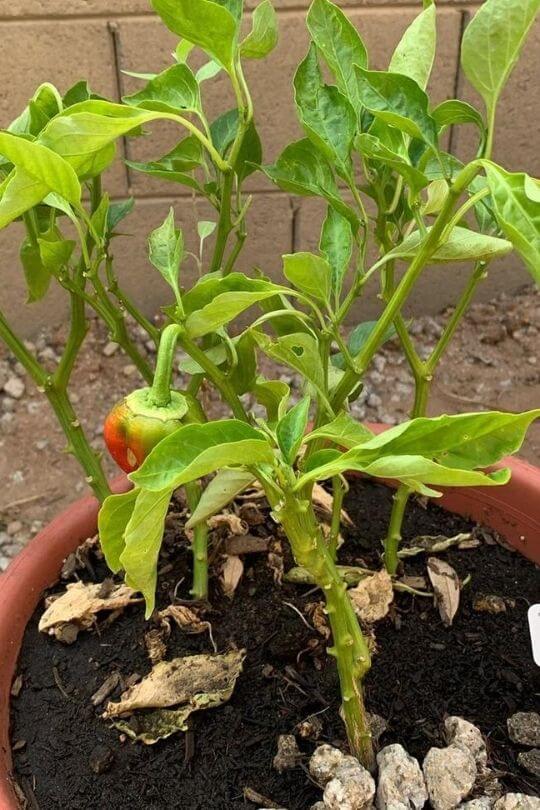
Inconsistent watering leads to water stress, which causes the leaves on your pepper plants to turn yellow and lower pepper production and stunted growth.
Most people understand that lack of watering can cause yellow leaves or death of a plant, but not all gardeners know that overwatering can be just as problematic.
Watering too much or too little leads to stress on your plant. Everyone knows that water is an essential key to plant growth, but you need to get the amount correct.
Pepper plants tend to do better with less water than too much water. You should water just enough to ensure the soil is moist but not wet.
Container grown pepper plans need plenty of drainage holes, or you’ll end up with waterlogged roots.
Without drainage, your plants won’t be able to access enough oxygen, which is a severe problem. That leads to yellowing leaves, as well as smaller plants and productivity problems.
The most common problem is that overwatering rather than underwatering. Peppers handle being dried out, and the leaves start to wilt if your plant is dehydrated. When it comes to pepper plants, it’s better to stick to the side of dry rather than too wet.
Fixing Water Stress
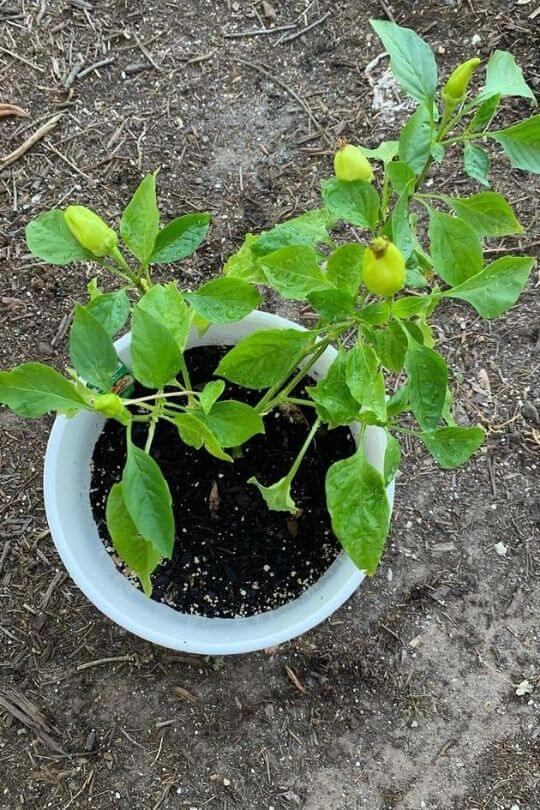
Fixing this problem is easy to fix.
Check your pepper plants each day. Stick your finger into the soil to feel for moisture. If it’s moist two inches down, then the plants don’t need to be watered. If the soil isn’t moist, you need to water.
Another option is to buy a water meter that measures the amount of water in your soil. These meters also measure the pH level in your soil.
2. Nitrogen Deficiency
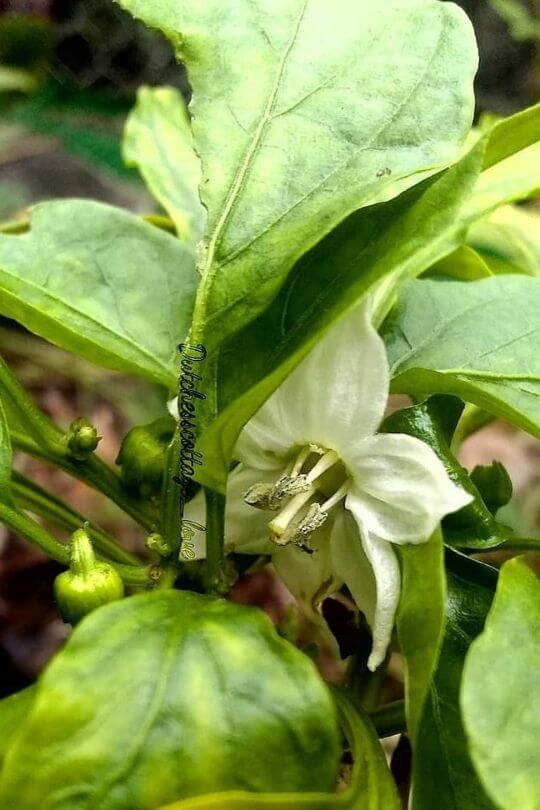
Nitrogen is a necessary nutrient that is required for proper plant growth. Without nitrogen, your plant won’t be able to grow strong and larger with green leaves, and a common sign of nitrogen deficiency is yellowing leaves.
You’ll know that a lack of nitrogen is your culprit because the yellow leaves will start at the bottom of your pepper plant, slowing moving upwards. The yellowing moves upwards because nitrogen is considered a “mobile nutrient,” which means it can move from one part of the plant to another over time.
A nitrogen deficiency causes your plant to move the remaining nutrients into the newer leaves from the older leaves. The older leaves at the bottom of the plant turn yellow first.
At times, the older yellow leaves will fall off of the plant entirely. So, the signs of nitrogen deficiency include:
How To Fix Nitrogen Deficiency
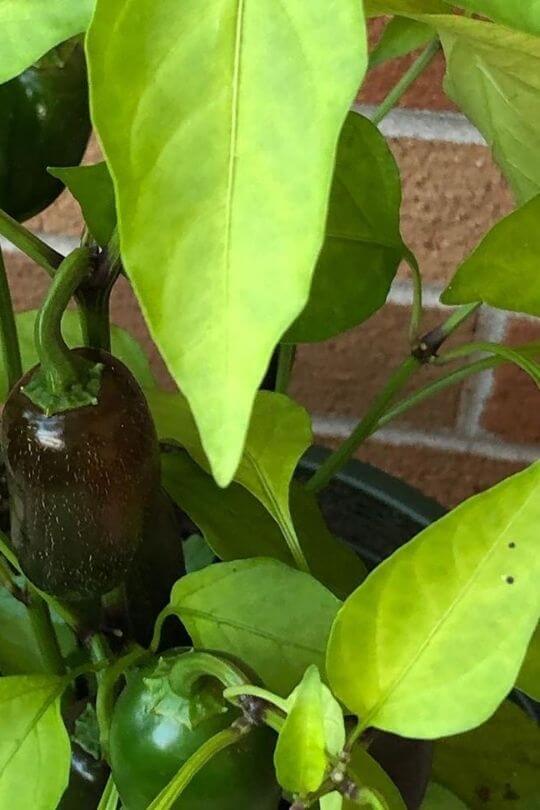
If you want to fix your plant’s nitrogen deficiency, the best thing you can do is fertilize. Fertilizer is necessary, and you should plan to feed your pepper plants once per week.
It’s the best practice to keep your plants healthy throughout the growing season.
Try using a 5-5-5 fertilizer which works to provide enough nitrogen to stop your plants from turning yellow.
However, it’s essential to understand that once you have yellow leaves on pepper plants, they won’t turn back to green.
Yellow leaves stay yellow. Once you know you fixed the problem, don’t worry about the leaves
3. Other Nutrient Deficiencies
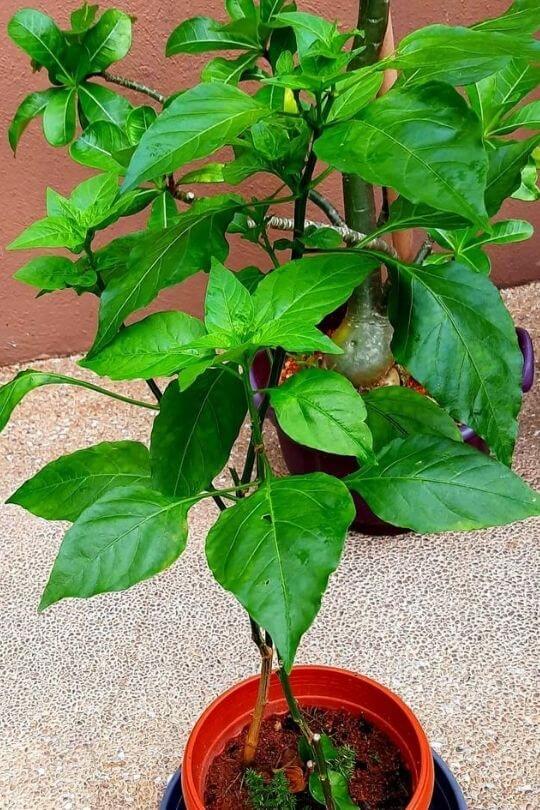
Pepper plants need more than nitrogen to stay alive! Nitrogen deficiency might be the most common issue, but if your pepper plants are turning yellow, it could be a lack of a variety of nutrients.
Magnesium and calcium are two other elements that are necessary for the growth of your plants and could cause yellowing if deficient.
Magnesium Deficiency
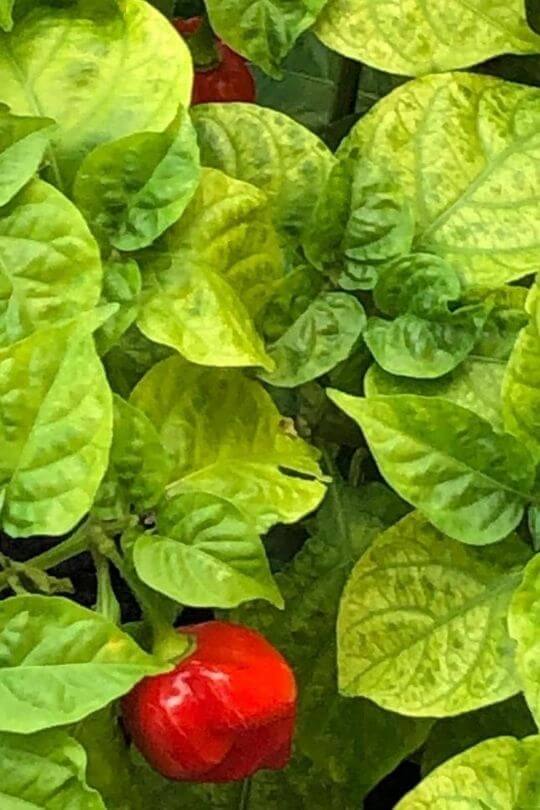
Magnesium is needed to develop your pepper plants properly. A deficiency is not common in soil-based gardening, but it can happen.
If magnesium is your problem, the yellowing starts at the bottom of the plant, similar to a nitrogen deficiency.
However, the critical difference is that the leaves’ veins will remain green, and the flesh turns yellow.
This is called chlorosis, and it’s the easiest way to distinguish a magnesium deficiency from a lack of nitrogen.
Calcium Deficiency
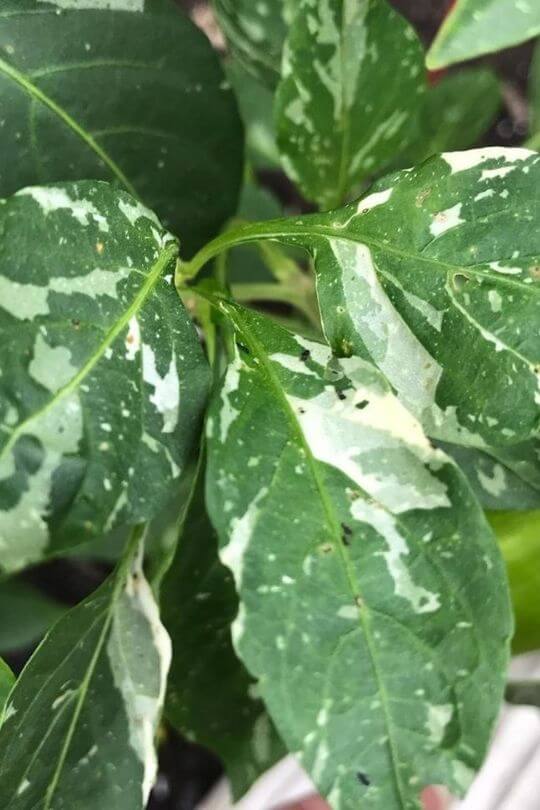
Like humans, calcium plays an essential role in the development of strong cellular walls in your plants.
Without calcium, your pepper plants would have trouble fruiting and absorbing additional yet needed nutrients. Calcium also aids in the expansion of the root system.
A calcium deficiency is far less common, but you’d find yellowing leaves, as well as:
How To Fix A Nutrient Deficiency
A typical fertilizer typically won’t treat magnesium or calcium deficiencies. You can buy cal-mag sprays on the plant foliage, but this is a temporary solution that won’t be your permanent solution.
Your goal should be to improve your overall soil. Epsom salt can increase the magnesium in your soil, and adding crushed eggshells provide both calcium and magnesium.
You must enrich your soil with compost, especially before the following growing season, or the problem will persist.
4. Your Plant Is Suffering From a Disease
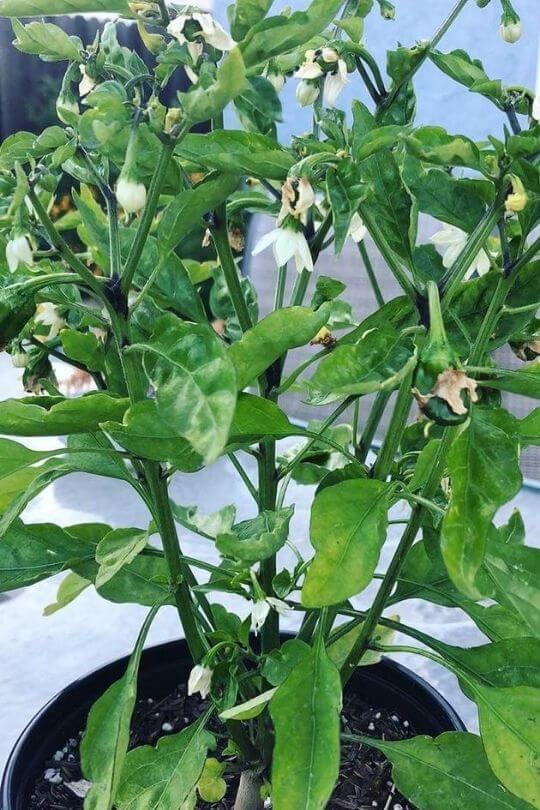
Another problem that might cause yellow leaves on pepper plants is a disease. Several diseases can cause yellow leaves, such as:
Typically, if a disease is your problem, you’ll also notice other effects on your plant. You might have brown leaf spots, black lesions on the leaves, or wilting.
How To Fix Disease Problems
Unfortunately, a majority of diseases that cause yellowing leaves are untreatable, and it’s a sign that you need to discard your plants.
At this point, your goal is to prevent the spread to the surrounding plants and stop the damage from worsening. It’s better to lose one or two plants than all of them.
Make sure you avoid planting any other nightshade vegetable, such as tomatoes or peppers, in that same location in the following year. Diseases can also live in the soil and infect future plants.
5. Pest Infestations
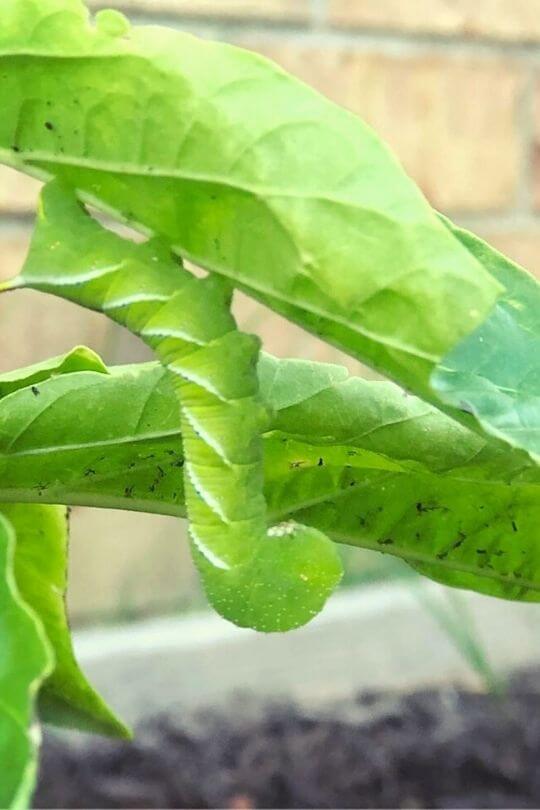
Pests can also cause yellow leaves, but you should be able to spot the pests with a close inspection of your plants. Pests that can cause yellowing leaves are ones that suck on your plants, removing nutrients and water, such as:
Take a close look at the yellowing. If it appears in a tiny dot pattern, it could be from insects. Look at the top and underside of the leaves. Aphids and whiteflies appear as a cluster on the bottom of the leaves. Beetles are easier to spot and look like what they’re called – a beetle.
In most cases, these pests won’t kill your pepper plant, but it can cause the weakening of the plant leading to susceptibility to diseases or death.
How To Fix A Pest Infestation
Fixing a pest problem can be problematic for organic gardeners who don’t use chemical pesticides. It’s not impossible, though, and it’s the best choice for vegetable gardeners.
Chemicals from pesticides soak into the vegetables that you’re going to serve your family; that’s not appealing.
Neem oil is a safe choice for organic gardeners that only kills harmful pests. It washes off with water, so you should wait to apply it until there isn’t any rain in the forecast for a few days.
It also doesn’t soak into your plants, nor does it affect people, animals, or other good insects that you want in your garden.
6. Yellow Leaves Stay Yellow
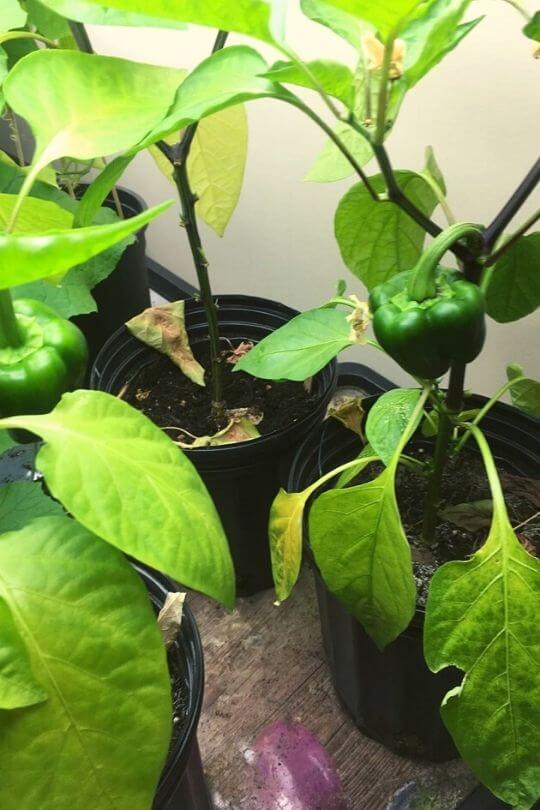
So what if none of these problems is the issue?
The truth is that you can fix the problem, either intentionally or accidentally (such as by watering less often because you’re busy for a few weeks), but the yellow leaves on the pepper plants are still on the plant.
Even if you fix the water stress or nutrient deficiencies, the leaves will not change back to green. You’ll fix the new growth; the old growth cannot be changed or fixed.
Know the Reason for Yellowing Leaves
Finding yellow leaves on pepper plants is frustrating; you’re looking forward to a bountiful pepper harvest. You don’t want anything that could jeopardize it. Check out your plants carefully to determine what could be the cause.
Remember that water stress and nutrient deficiencies are the leading causes of yellowing leaves. Fix those issues, and your new growth will be green and lovely.

Written By
Amber Noyes
Amber Noyes was born and raised in a suburban California town, San Mateo. She holds a master’s degree in horticulture from the University of California as well as a BS in Biology from the University of San Francisco. With experience working on an organic farm, water conservation research, farmers’ markets, and plant nursery, she understands what makes plants thrive and how we can better understand the connection between microclimate and plant health. When she’s not on the land, Amber loves informing people of new ideas/things related to gardening, especially organic gardening, houseplants, and growing plants in a small space.
